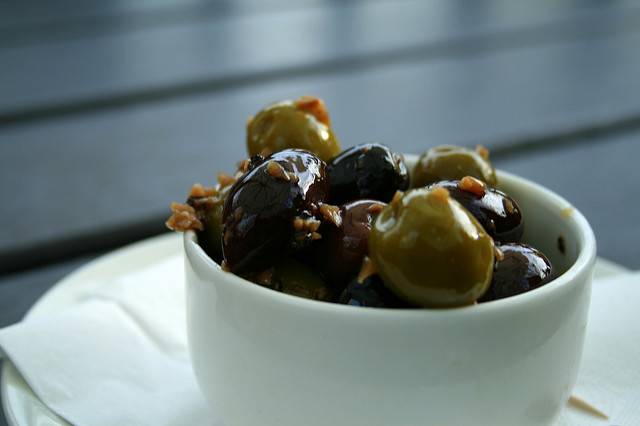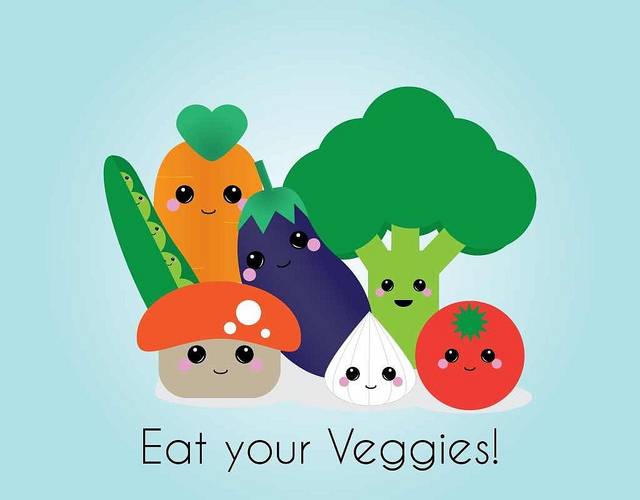A few days ago we talked about the questions you are going to have to ask yourself and the decisions you’ll have to make regarding your healthy lifestyle change. You’ll need to know these for today’s action steps. You are going to be setting up your healthy pantry to reflect your new eating habits.
Today you’ll go through your cupboards and make a plan of what foods to get rid of and what to keep or add. You can start tossing some stuff out if you want to, but that isn’t necessary. Get familiar with your food patterns and next time you go shopping switch one food or ingredient at a time.

Photo: Salvation Army USA West on Flickr
Steps to a healthy pantry and fridge
Step 1 – Toss the junk food
You are going to have to get rid of all the unhealthy junk food that you’ve got in your pantry eventually. Things like chips, soda, candy and cake need to go. Don’t keep them around because one of your family members likes it. You aren’t doing them any favors by feeding it to them either.
Slowly start tossing out anything that has a lot of fat, sugar, salt (sodium) and calories. You can buy or make food with less salt in them. When you get rid of these items, add a replacement on your shopping list for next week.
In the fridge look towards all those condiments. You’ll find high fructose corn syrup and high fat content in most of them. Throw them away. You can either make or buy something that is better for you. Stock up on honey, lemons, vinegar, herbs and spices when you start getting rid of the condiments.
You can also do research to buy alternatives such as organic, no preservatives, no msg, low sodium and sugar. To make sure the label does not have the hidden sugar look for –ose (at the end of words) ingredients.
Last, hit the freezer. Frozen pizzas and any other quick dinner or afternoon snacks that are high in fat shouldn’t be in there. Replace with whole wheat snacks or freezer meals that you make.
If you’re not sure what to keep and throw away you should be checking the label. Look at the serving sizes, and then look at the calories – you’ll probably discover that you and your family are eating more than a serving and those add up fast. Look at the fat, sodium and anything in between. You don’t want too much of any of that in your diet.
Step 2 – Restock snack foods with healthy alternatives
Your family still needs snacks during the day. Replace the over processed, fat ridden, empty calorie snacks with healthy alternatives.
Buy baked chips instead of fried, find whole grain crackers instead of regular ones, and pop your own popcorn or buy lower fat and salt options. Keep more fruits and vegetables around and make them easy to grab! Wash them and put them in snack bags in the fridge for an on-the-go snack. Buy a pretty bowl that you set on the counter – add pears, apples, bananas and other fruits your family enjoy. Put it somewhere you can easily see it.
Buy more nuts. Raw ones are the best. They provide healthy fat and will fill you up. To make sure the serving sizes are correct measure them out and put them in snack bags.
Get an app that will help you. Fooducate is one app that will score the snacks. All you do is scan the bar code and it’ll give you a score based on the amount of sugar, calories and even how it was made.
Step 3 – Keep these staples on hand
Now that you’ve gotten rid of all the empty calorie food in your fridge, freezer and pantry you can start new!
Whole Wheat
It is recommended you have three servings of whole wheat daily – so make sure you pantry is stocked up. Whole wheat comes in many forms such as flour, oats, pasta and bread. When starting to use whole wheat you could add half regular and half whole wheat to help you adjust to the taste and texture.
Whole wheat bread or rolls need to either say 100% whole wheat on the packaging or you can also find it on the ingredients list. To do this make sure whole wheat is listed as one of the first three ingredients.
Fruits and Vegetables
Start adding more fruits and veggies to each dish you create. Always have them on hand, try different varieties, and make use of the seasonal produce.
Diary
Go for low fat cheese, sour cream, and cottage cheese because dairy is good for your body. You just don’t need all of the fat that goes with it.
Yogurt is a must! The probiotics in it will help your body with digestion.
Beans / Legumes
Not only do they contain protein, but fiber as well. Why is this good? Fiber keeps you full longer! Add beans to salads, burritos, and use them as a side dish.
Be more mindful of what you buy. Remember that you don’t want the junk food in your house – so don’t buy it. If you are the primary person who is responsible for buying and cooking food, then ultimately it is your decision. Your family is not going to starve themselves!
Getting healthy is going to take time to switch the way you think and buy groceries. Don’t beat yourself up if you have a day that you make a bad decision. Even two days. Instead remember that you’ve been doing an amazing job at eating healthy and making good choices.
Want to catch up on some Small Changes Challenge reading? Here’s a quick link to all the posts!












